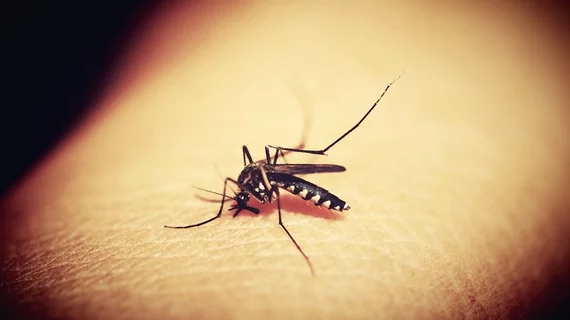Prenatal US detects brain abnormalities in fetuses exposed to Zika virus
In a cohort of 82 pregnant women with the Zika virus (ZIKV) infection, prenatal ultrasound (US) was able to detect all fetal brain abnormalities but one. Results from the study were published in JAMA Pediatrics.
“Since late 2015, large regions of South and Central America and the Caribbean were affected by the neurologic phenotype of the congenital ZIKV syndrome and the associated brain imaging findings of neuronal migration abnormalities, callosal and cerebellar malformation, and ventriculomegaly,” wrote lead author Sarah B. Mulkey, MD, PhD, of the Children’s National Health System in Washington, D.C, and colleagues. “The international medical community had to quickly develop an understanding of the infection and provide recommendations for evaluation of exposed and infected pregnant women and their infants."
Mulkey and colleagues noted the progression of fetal brain injury is still not well documented. The researchers performed neuroimaging of fetuses and infants exposed to ZIKV with MRI and US.
The 82 study participants were from Colombia and the United States and enrolled between June 2016 through June 2017. The cohort underwent one or more MRI and US imaging exams during their second and/or third trimesters. The infants underwent brain MRI and cranial US, and blood samples were taken to test for ZIKV.
“Postnatal neuroimaging in infants who had normal prenatal imaging revealed new mild abnormalities. For most patients, prenatal and postnatal US may identify ZIKV-related brain injury,” Mulkey and colleagues noted. The researchers also found:
- In 4 percent of cases, fetal MRI abnormalities were consistent with ZIKV infection.
- Two patients had heterotopias and malformations in cortical development.
- One patient exhibited parietal encephalocele, Chiari II malformation, and microcephaly.
- US results remained normal despite fetal abnormalities detected on MRI in one patient.
- Brain MRI was acquired in 53 infants and demonstrated mild abnormalities in 13 percent of the infants.
- 37 percent of 57 infants who underwent postnatal cranial US, which discovered changed of lenticulostriate vasculopathy, choroid plexus cysts, germinolytic/subependymal cysts, and/or calcification.
- Absence of prolonged maternal viremia did not have predictive associations with normal fetal or neonatal brain imaging.
“Postnatal imaging can detect changes not seen on fetal imaging, supporting the current CDC recommendation for postnatal cranial US,” the researchers wrote.
Mulkey et al. noted the combination of prenatal and postnatal ultrasonography and MRI are needed to view the “full spectrum” of Zika virus-related brain injuries, though US detected the greatest number of abnormal cases.
The researchers also wrote that "long-term follow-up to assess the neurodevelopmental significance of these early neuroimaging findings, both normal and abnormal" is currently in progress.

